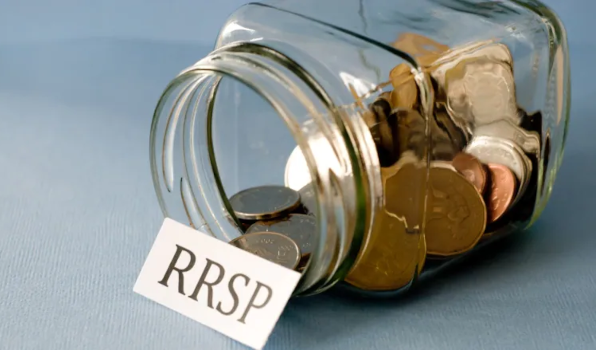I’ve got about $100k saved in RRSPs that I want to gradually access over the next four years (25k per year). Knowing this, what are my best options to make sure I get this money?
When taking money out of registered retirement savings plans (RRSPs), there are two main concerns which come to mind. One is that money withdrawn from RRSPs is treated like taxable income. When we put money into RRSPs it acts as a tax credit (basically removing tax on the money we deposit). When we take money back out of the RRSP that deferred income tax kicks in and we end up paying a portion of the money as income tax.
This means we probably want to only withdraw money from the RRSP that we need and as we need it. If we withdraw all the funds from the RRSP at one time then that will likely place us in a higher tax bracket, resulting in more income tax being taken off.
As an example, if this RRSP is your sole source of income then withdrawing $25,000 per year for four years would result in your paying about $3,600 in income tax each year. Over four years that’s $14,400 of your investment going to taxes. (These numbers assume you’re living in Ontario, but they’ll be similarly proportional in other regions of Canada.) If you take the money all out at once and it’s your sole income you’ll get hit with a $26,800 income tax bill. Taking the money all out at once results in almost double the taxes.
Does this rule of taking out in small amounts always work out better than taking out the money all at once? Let’s look at another scenario where you make about $50,000 and this RRSP adds to your income. If you make $50,000 and withdraw $25,000 from your RRSP each year, that’ll result in a tax bill of $18,900 per year. Over four years that adds up to $75,600 in taxes. On the other hand, if you make $50,000 and withdraw the whole $100,000 from your RRSP then your combined income is $150,000 for one year, which should result in a tax bill of $48,500. This is quite a bit lower. Which may see strange, until we remember that you’ll presumably still work the remaining three years while making $50,000. Each of the remaining three years your $50,000 income would add an annual income tax bill of $10,600, or $31,800 for all three years. Add that to the $48,500 from the first year and the bill rises to $80,300. Taking the money all out at once costs an extra $4,700.
In other words, it’s virtually always a good idea to take your RRSP out in small chunks each year rather than withdrawing it all at once. It’ll likely save you between $5,000 and $15,000, depending on your income level.
The other thing to consider when pulling money out of an RRSP investment is the stock market may drop during the time frame when you’re withdrawing the money. If the market is in a nosedive, your investment could drop faster that what you’d pay in taxes by taking the money out all at once. Looking at our previous example, we saved $5,000 by taking the money out over four years rather than all at once. But if the stock market drops 10% or more during the four years your withdrawing money, you might lose more than $5,000 to the falling price of stocks.
In other words, if the market is going up or holding steady while you are withdrawing funds, it makes sense to take money out in smaller chunks. But if the market is falling, it might be worth taking the hit at tax time to get as much of our money as possible – preferring to lose a little money to taxes rather than a lot to falling stock prices. If you do withdraw all the money at one time, consider putting any funds you don’t immediately need in a high interest savings account (HISA) with your bank so it earns a little interest while you’re waiting to use it.
An alternative to taking all the money out at once is to take out a small amount each year while shifting the money remaining in your RRSP to more conservative, stable investments. Talk with your fund manager or financial advisor and let them know you want to withdraw a little money each year and you’re no longer interested in growing your RRSP, you want it to retain its value.
This gives you the best of both options. It means you can still withdraw small amounts of money from the RRSP each year, resulting in a smaller income tax bill. It also shifts your remaining investment into conservative funds which should retain most of their value, even if the stock market drops in the next three years.

Comments are closed, but trackbacks and pingbacks are open.